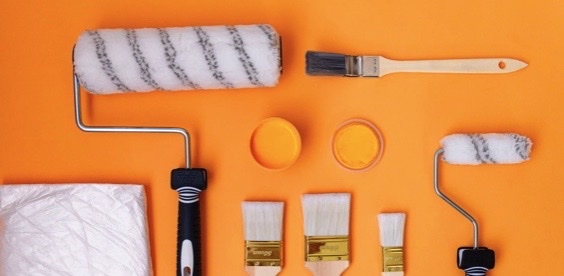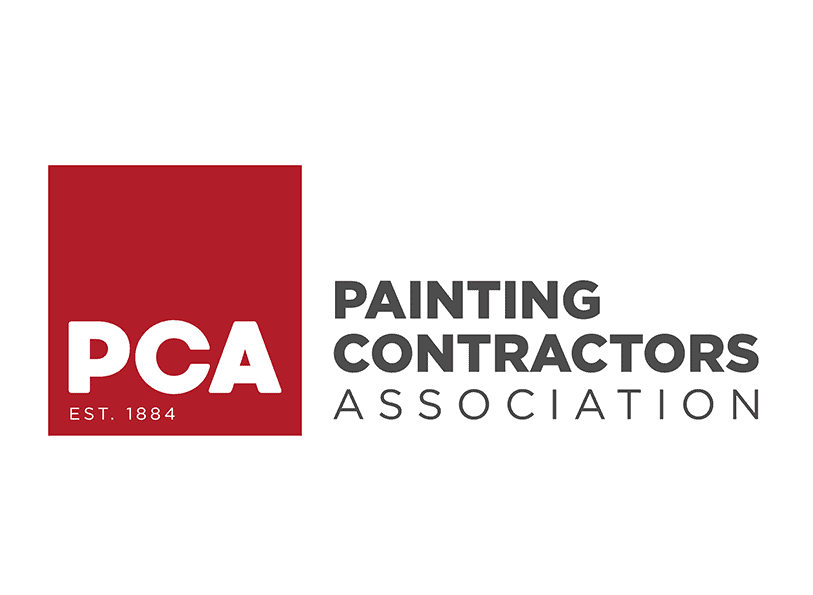
15 Dec How to Properly Clean Your Paint Brushes – Tips from the Pros
If you have ever painted anything, you might have encountered a messy situation while cleaning the paint brushes. The way you clean your brushes can significantly affect your future use of them. Nobody wants to see dried paint on their brush as it makes the bristles stiff, ruining them or shortening their lifespan. Here are our professional tips for correctly cleaning your brushes whenever you tackle a DIY paint project in your home.
Tip: Use nylon paint brushes or polyester paint brushes for latex and natural paint brushes for oil paints.
Tip 2: Always follow the manufacturer’s instructions for cleaning your paint brushes, including recommendations for solvents, paint thinners, and other cleaning materials. Also, be sure to use the correct type of brush for the paint you’re using.
1) Remove Any Wet Paint
-
-
-
- When painting, wet the brush only two inches from the tip. The less paint you leave on the brush, the less you’ll have to clean off later.
- When you finish painting, remove excess paint from the brush on the surface or a cloth.
- Another option is to use a brush comb carefully to tease out the paint from the bristles.
-
-
2) Use Solvent
-
-
-
- Water-based paints, such as acrylic or latex, are excellent options for most interior walls. They produce fewer odors and are easier to clean. Cleaning the brushes you’ve used for these types of paints is easy. All you need is to use warm water or mild dish soap.
- If you use oil-based paint, the cleaning is a bit trickier – and smellier. You’ll need to clean your brushes with mineral spirits or turpentine.
- Shellacs require you to clean the brushes with denatured alcohol.
-
-
While you should follow the manufacturer’s instructions for cleaning brushes with shellac or oil-based paint, here is a general guide:
-
-
-
- Before you get started, be sure you’re doing the brush cleaning in a very well-ventilated area.
- Submerge the brush’s bristles in a plastic bowl with enough solvent to cover the strands. Do not dip a dirty brush in the solvent’s original container.
- Gently stir the brush in the solvent for 10 to 30 seconds. You should see the paint dissolving in the solvent.
- Wipe the bristles against the side of the bowl to wipe off the paint.
- Repeat until no more paint comes off the brush.
- Once the brush appears to be rid of most of its paint, use lukewarm water to wash out any remaining paint and the solvent.
-
-
Next
-
-
-
- Rinse in a bowl or under running lukewarm water to remove any remaining paint residue. Once there is no remaining solvent, you can gently rub or tease out the brush.
- You should add a few drops of liquid dish soap to the bowl of water or directly onto the bristles if needed. Be sure to hold the brush with the bristles down if you opt to rinse under a tap. You don’t want water to enter the ferrule (the metal cap that tops seals the strands onto the handle).
- Finally, rinse the brush with warm, soap-free water to eliminate any remaining soap from the brush.
-
-
Tip: Only use warm water! Using hot water can cause the ferrule to expand and loosen, leading to bristle loss.
Paint-Hardened Brushes
Getting dried paint out of brushes can be challenging. Still, it’s worth trying, especially if you have a high-quality paintbrush. Here’s how to clean a paint-hardened brush:
-
-
-
- First, soak a paintbrush with hardened paint in vinegar for at least an hour. If the bristles remain inflexible, soak for an additional hour.
- If the bristles need more loosening after two hours, submerge the head of the brush in vinegar in a pot and heat to bring it to a gentle boil.
- Once it boils, remove it from the heat and allow it to cool off. Carefully remove the brush using a pot holder or tongs if needed. Remember that the metal part of the brush will likely be very hot!
- Once cool, comb out bristles with your fingers or a brush comb.
- Rinse out the loosened paint with water and repeat as necessary.
-
-
Tip: If vinegar is ineffective, try a commercial brush cleaner and follow the manufacturer’s instructions. You might need to soak the brush for more than 24 hours.
Dry and Store the Brush
Before you store a brush, it must be completely dry. There are a few ways to remove water from wet brushes.
-
-
-
- Shake the brush vigorously above a paint pail, cardboard box, or other container. Let it dry out by propping it so that the bristles don’t bend or are covered.
- Another option is to use a brush spinner to spin the brush dry.
- Repeat these steps as necessary.
- If moisture remains, blot the bristles using a paper towel, newspaper, or clean cloth until the brush has dried.
- To store the brush, lay it flat or hang it with the bristles pointing down.
-
-
Tip: Save the packaging of a new brush to use for storage. The original packaging will help the brush retain its original shape.
Cleaning paint brushes may seem like a daunting task, but it’s actually straightforward. If done correctly the first time, it helps keep the process really quick the next time you need to clean the brushes.

Mike Katounas is the owner of Home Works Painting, a painting business in Northern Virginia. He has over 15 years of experience in residential interior and exterior painting, drywall installation/repair, carpentry, wallpaper removal, power washing, commercial painting, color consultation, and staining/sealing. Their service areas include Chantilly, Fairfax, Herndon, Oakton, Reston. Mike takes pride in his work, and he always follows a strict code of conduct that includes the use of quality paint, a clean workspace, and an honest, respectful approach to his customers.












Sorry, the comment form is closed at this time.